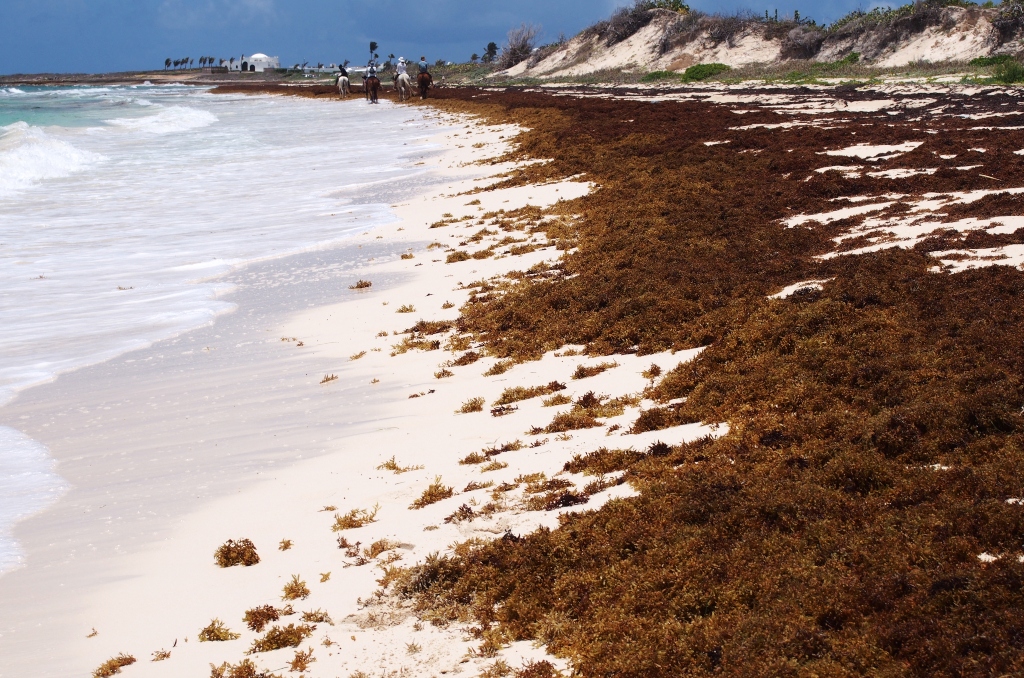Stinky Seaweed Covering Florida – Courtesy: Shutterstock – Image by nomis_h
If you’re looking to visit the beach soon, you may encounter a foul stench and sand that is covered in brown seaweed.
Sargassum, a type of seaweed, is arriving in record quantities this year on the coast of Central Florida, according to researchers, and sadly, things will get worse before they get better.
Every year, it comes as a nasty surprise in pockets along the coast, but this year, the quantity discovered is setting records.
Previously, the Northern Atlantic was where it grew mostly, but in the past ten years, the Tropical Atlantic has seen rapid growth. Researchers from the University of South Florida even saw a rise this year, with the volume of stinking seaweed rising from 18 million tons in May to 24 million tons in June.
“This is a bloom that is 8,850 kilometers long. It’s the biggest algae bloom in the world,” said Dr. Brian LaPointe, a researcher with Florida Atlantic University.
LaPointe said they have been researching the foul-smelling seaweed over the last decade and found that it is fed by nitrogen.
“More nitrogen from human activities—like deforestation, biomass burning in Africa, for example, wastewater with just increasing human population growth, fertilizers—it’s fostering what we refer to now as harmful algal blooms,” he said. “It’s exactly what we’re also seeing in the Indian River Lagoon killing the seagrasses and causing the starvation in the manatees. This is just on a much larger scale.”
The large growth of sargassum is also something that Central Florida meteorologists are watching due to an increase in rain.
“So, we’re seeing a lot more runoff that contains fertilizers that run off into the Mississippi River, the Amazon River, and then get out into the ocean so these big blooms can feed off of that,” meteorologist Jonathan Kegges said.
He said the Saharan Dust also gives it power and then finds its way toward Central Florida’s coast.
“The gulf stream runs so close to the counties. It’s right up it so if you get some of that developing in the Caribbean, it’s going to find that gulf stream current and ride right up the Florida straits and then right up our coast,” Kegges added.
Researchers said the East Coast of the Sunshine State should get a break from the stinky seaweed by the fall.
“July is typically the maximum amount for biomass of sargassum in terms of arriving here so we’re going to have probably another month or maybe two months,” LaPointe said.
Make sure you are staying up-to-date with the latest and most important Florida news with Florida Insider. Whether you are interested in business, education, government, history, sports, real estate, nature, weather, or travel: we have something for everyone. Follow along for the best stories in the Sunshine State.

